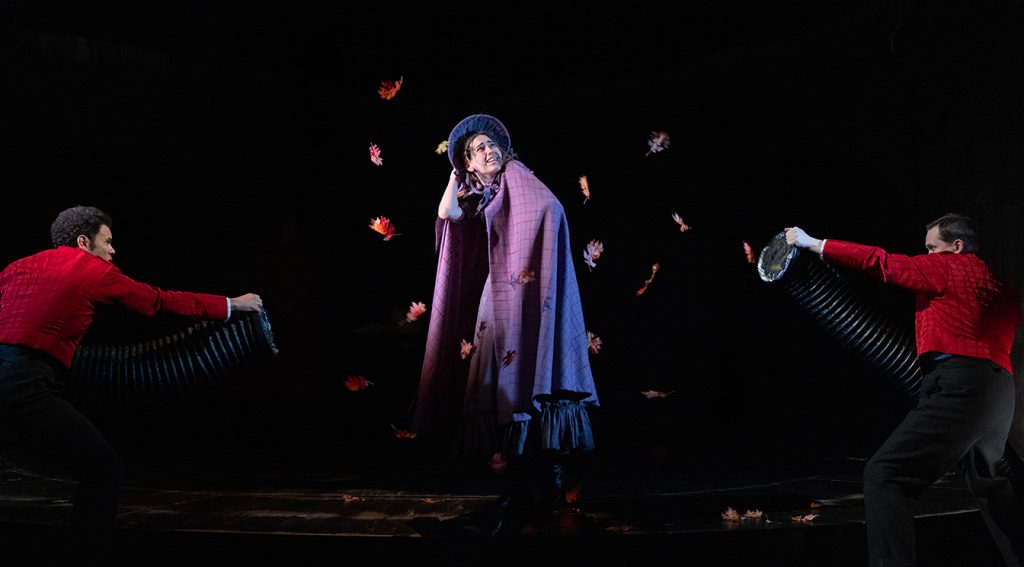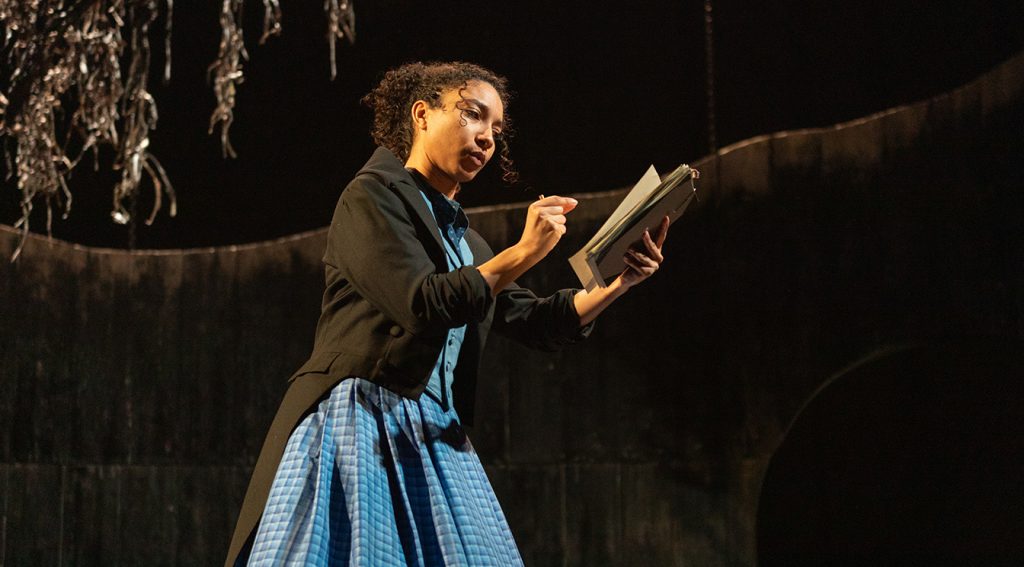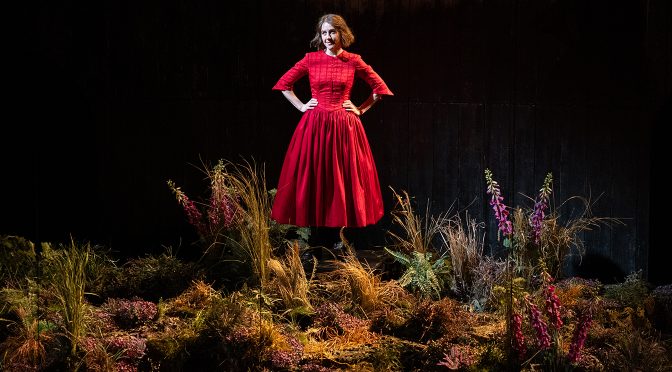Playwright Sarah Gordon’s new go at literary revisionism is fun. Although hardly obscure, the Brontë in the title here is Anne and the play looks at her life and work. The twist is that our narrator is her more famous sister, Charlotte, and despite her humorous protestations, she wants to be the hero.
The result is that we learn a lot about the “little voice” of seemingly “cute” Anne alongside Charlotte and don’t forget, Emily, and their no-good brother Branwell. But there’s another layer too – a surprising source of jokes – as Charlotte addresses her readers in the present day and we learn how important her reputation is to her.
“one mask for all three of us”
Taking the roles of Anne, Emily and their brother, Rhiannon Clements, Adele James and James Phoon all distinguish themselves well and make the most out of Gordon’s comedy without overplaying it. It’s not their fault this is Gemma Whelan’s show. As Charlotte, she is by far the most vivid character, with the best lines. She is ruthless, unapologetic, and very funny. She is selfish but her struggles are moving. While Anne and Charlotte are keen on the anonymity of pseudonyms – “one mask for all three of us” – Charlotte wants fame.

As well as plenty of laughs from hearty doses of good Yorkshire common sense and hindsight, director Natalie Ibu’s staging is witty. Four fellas help with the action and add comic touches (Nick Blakeley’s Elizabeth Gaskell is a good one). Even Grace Smart’s set gets smiles, surprising from the start, and the revolving floor is used to great effect.
There’s every attempt to make the story modern with mention of gatekeepers, toxicity, and victimhood. Charlotte is prone to “lash out” and wants to be “in the room” with literary greats. None of this jars because the strategy is so fully embraced. Maybe a bit too much of the humour comes from swearing; the irony of these writers being inarticulate wears a little thin.

When things get serious, the play is less successful. Emily and Anne’s deaths are both moving but even Charlotte says things are happening too quickly. Those addresses to the audience become starker. Turns out it really was about Charlotte all along. Final remarks about a writer’s legacy stumble. But there’s a lot of fun along the way.
All those big questions about family loyalty, sibling dynamics, women in history and literature, or even what power books can have, are raised. It’s all interesting. And if everything is addressed thinly, that’s not necessarily bad; a light touch can be effective, this revision is told well, and the show is thoroughly entertaining.
Until 25 May 2024
Photos by Isha Shah

